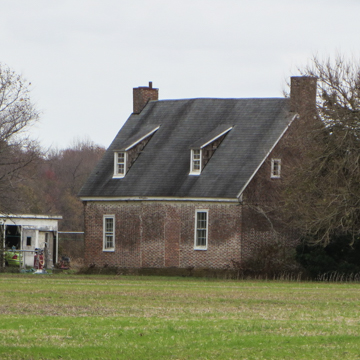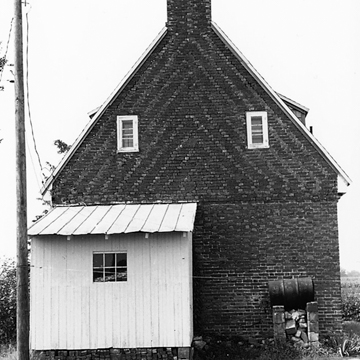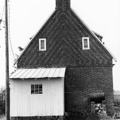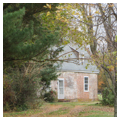One of the earliest brick houses in Sussex County, and long called Maston House after the man who bought it in 1851, it originally occupied a 450-acre tract called Cannon's Savannah, then in Maryland. Stylistically, it belongs to Maryland's Eastern Shore in its steep roof, brick corbeling at the eaves, chevron-shaped glazed-header diapering in the gables, and tilted-false-plate roof construction. Originally, it was single-cell, the simplest possible plan, but five years later it was expanded by one room. Inscribed bricks give the dates of both the original and second building campaigns. Interior chimneys stand at either end. They have a glazed pattern and show traces of pargetting in the band at top, features that suggest a lingering seventeenth-century aesthetic. In the early twentieth century, the house became a garage, with a big door cut in (like the Eratt House, WS7). Photographer Frances Benjamin Johnston recorded the place, admired by historians as a colonial “Maryland house in Delaware.” Architectural historian William Allen praises its brick-work as the best of any pre-Georgian house in the state.
You are here
Maston House
If SAH Archipedia has been useful to you, please consider supporting it.
SAH Archipedia tells the story of the United States through its buildings, landscapes, and cities. This freely available resource empowers the public with authoritative knowledge that deepens their understanding and appreciation of the built environment. But the Society of Architectural Historians, which created SAH Archipedia with University of Virginia Press, needs your support to maintain the high-caliber research, writing, photography, cartography, editing, design, and programming that make SAH Archipedia a trusted online resource available to all who value the history of place, heritage tourism, and learning.


























